After early breakfast drive to Airport. Representative from Bhutan Wisdom Liberty will bid you farewell for your onward destination.
from 0 review
11 Days 10 Nights
Daily Tour
Unlimited
Any Preferred Language
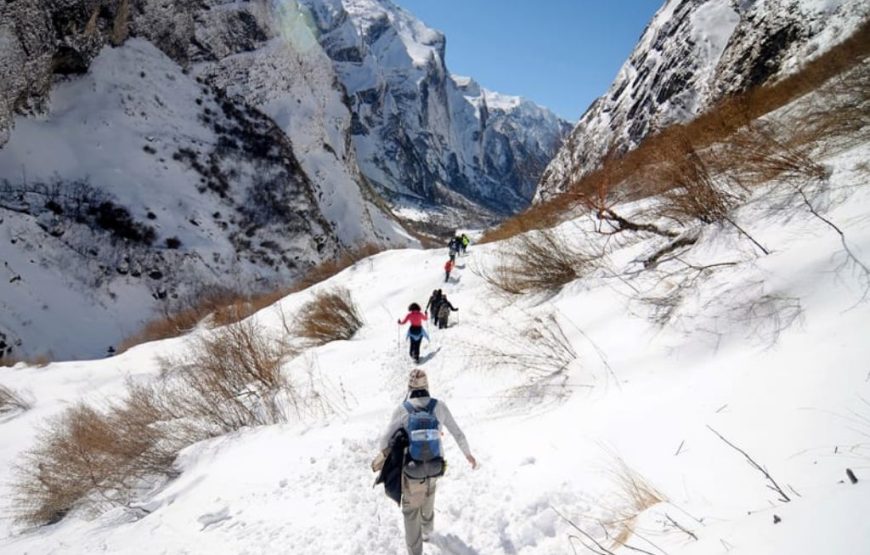
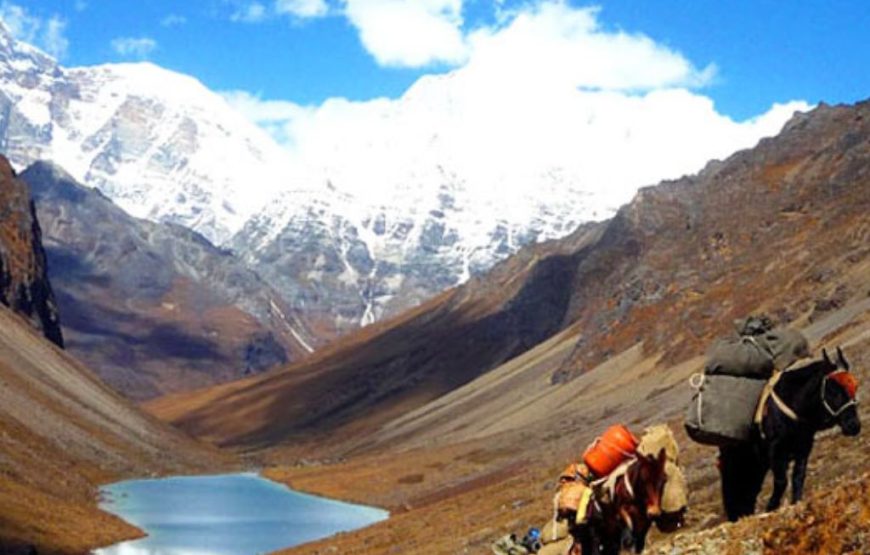
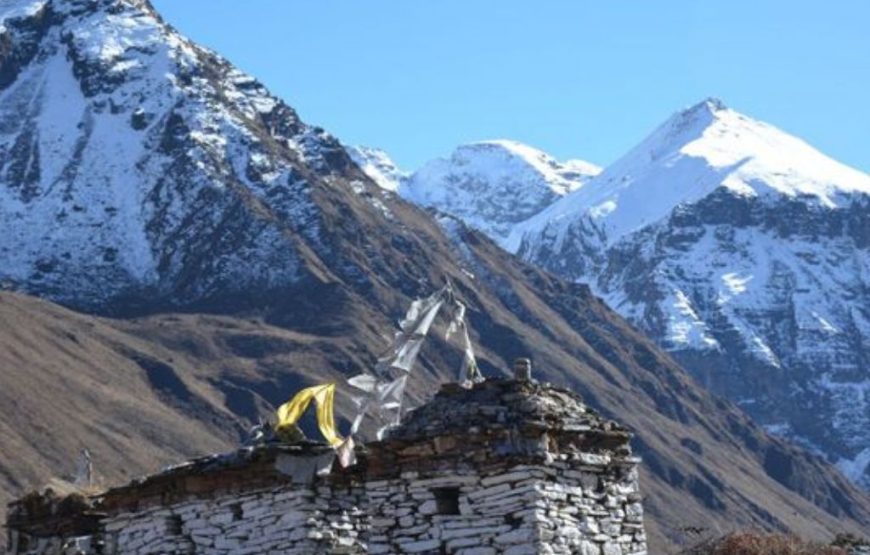
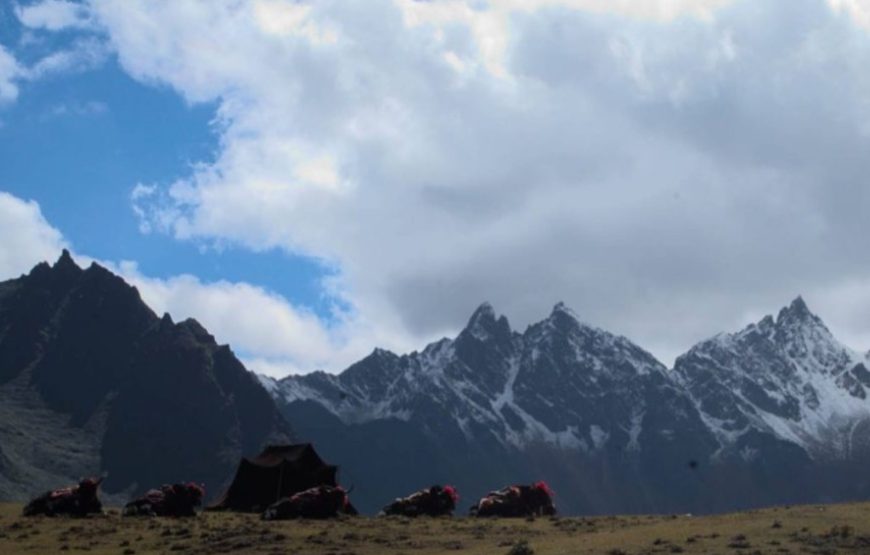
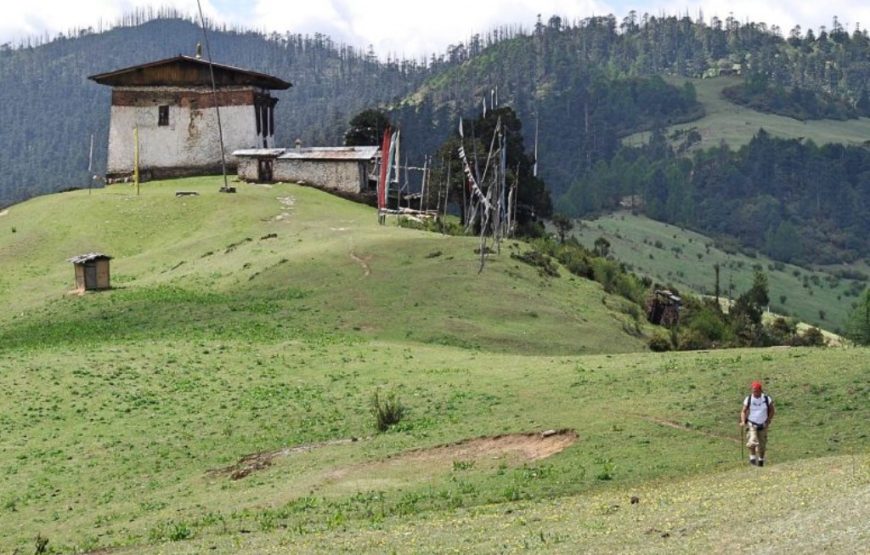
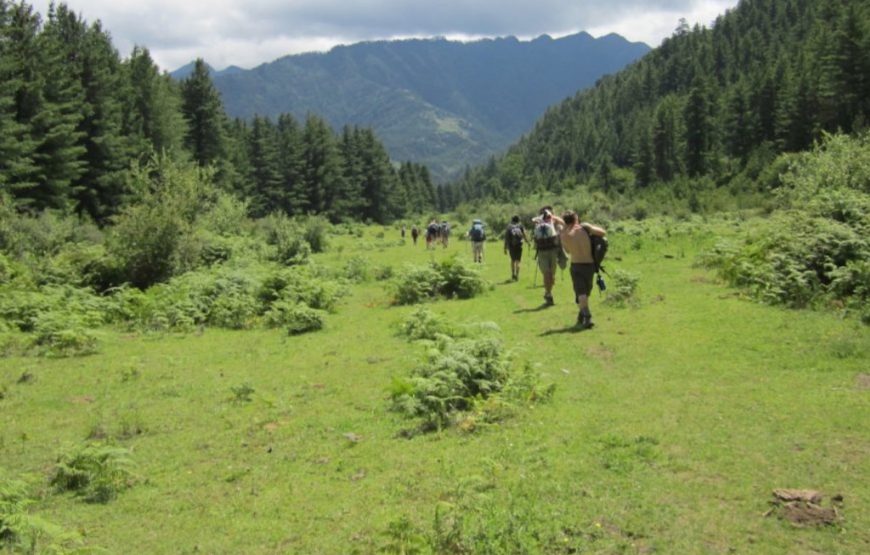
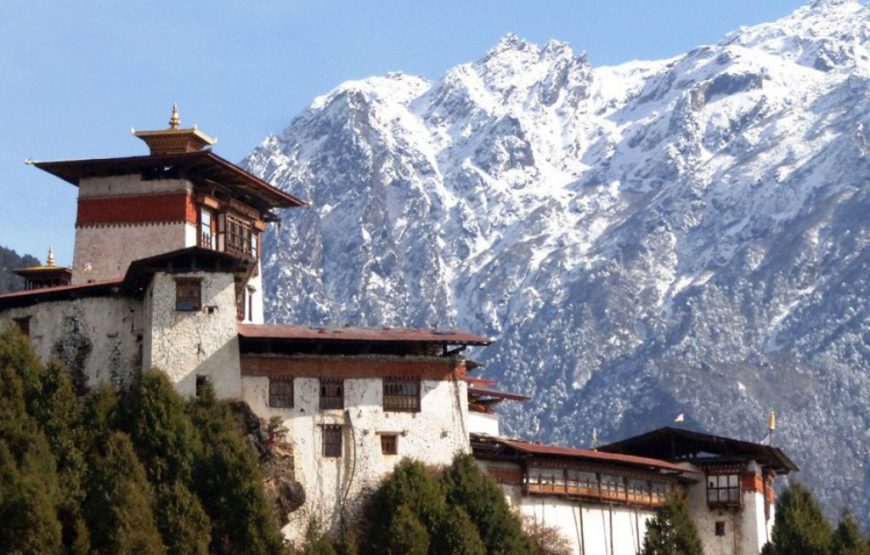
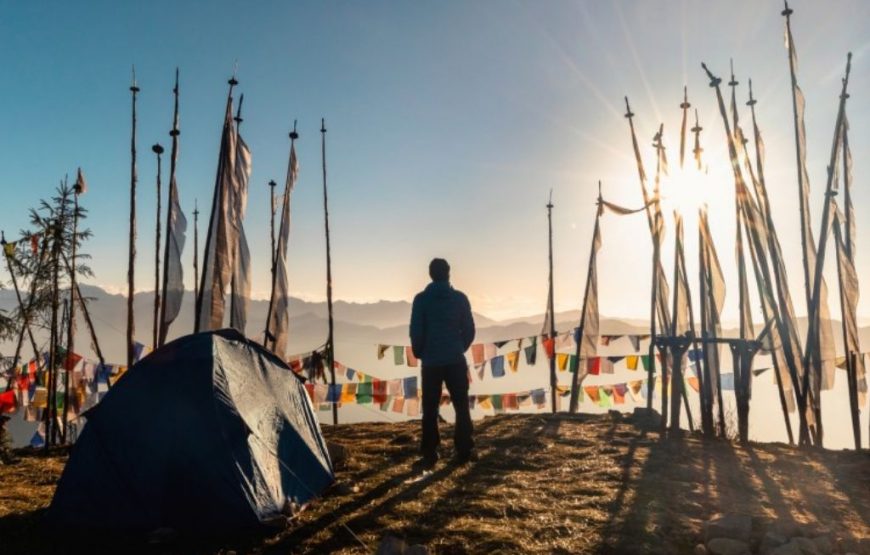
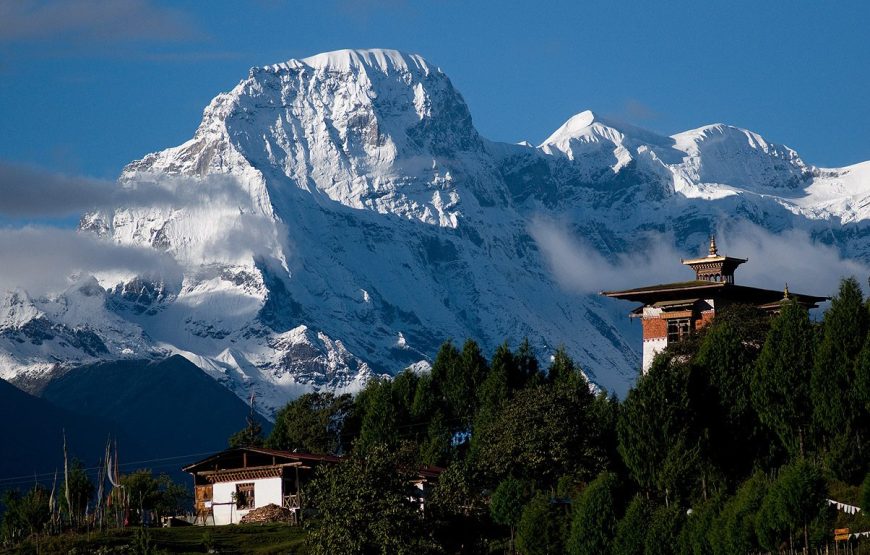
Although the trek leads to plenty of beautiful high altitude mountain lakes and provides stunning views of the whole Bhutanese Himalayan range as well as Kanjenjunga (3rd highest mountainof the worl in Sikkim). It is still not a very popular trek. You might not meet any other trekkers during the whole trek. It is also possible to start and end the trek in Gynekha. The optional route back to GYnekha leads through beautiful Bhutanese villages. Although most days are short, the day from Gur to Labatama involves a lot climbing and is, therefore, pretty strenuous.
Dagala thousand lake treks consist of six day and trek starts from Gynekha leading through some of the beautiful Bhutanese villages and then up to plenty of beautiful high altitude mountain lakes and provides dramatic views of the great Himalayan mountain ranges. You can see some of the highest mountains of the world in the kingdom of Bhutan.
Your ‘Bhutan Sangay Tours’ guide will welcome you at the airport and drive you to the hotel. After lunch visit Rimpung Dzong built by the Unifier and then Kyichu Lhakhang one of the oldest temple in the country. By evening, walk around in the town of Paro. Dinner and halt in the hotel in Paro.
In the morning after breakfast, a short drive from the hotel to Ramthangka (start point). To avoid the hot sun an early start is advisable for the two-hour climb, via the cafeteria, to the tigers nest viewpoint. Descend steeply, and then climb up to the monastery, passing a waterfall. One of the amazing and important pieces of architecture in Bhutan, Taktsang Goemba defies logic, gravity, and reason. Legend has it that cliff side was where Guru Rimpochoe (Padmasambhava) landed on the back of the flying Tigress, bringing Buddhism to Bhutan from Tibet. Dinner and halt in the hotel.
Today after breakfast, drive to the starting point from Paro which would take approximately 1hour to Gynekha.
Hike time: 5 hours Estimated distance: 7km Elevation: 700m ascent, 60m descent. Camp at 3290m
The trek starts from beautiful Gynekha village with a short descent down to the river. From here – after crossing the river – you start climbing till you reach a huge rock platform from where you have a picturesque view of the valley below. After another two hours you reach Gur, some yak pastures below the main trail.
Hike time: 5 hours Estimated distance: 12km Elevation: 1040m ascent, 110m descent. Camp at 4300m
While trekking across the ridges, one enjoys the beauty of the rugged mountain vegetation. The path winds through flowers and wild asparagus (in spring). The meadows are refreshing and inspiring. The first pass symbolized by a huge cairn gives a spectacular view of Kanjenjunga (Sikkim) and more or less all the Bhutanese Himalayan peaks. Descending the pass one will see the whole Dagala range, meadows and yak herders camp. Once descended into the Labatama valley you ascend gradually through the valley passing some yak herder huts till you reach Uthso Tsho. The campsite is right next to the lake.
This day is ideal for an excursion to any of three lakes: Reli Tsho, Hen Tsho and Jama Tsho. The day and place is also ideal for trout fishing.
Hike time: 6 hours Estimated distance: 8km Elevation: 260m ascent, 520m descent. Camp at 4000m
The trail climbs along the western side of Dala Tsho up to a saddle at 4,520m from where you have again a majestic view of Himalayan peaks during descent. This point is around 4,460m. The mountain peaks include Everest (Nepal), Kanchenjunga (Sikkim), Jhomolhari, Jichu Drake, Tsherim Gang, Khangbum, Masang Gang, Tsende Gang and Gangche Ta. If you want an even better view, you can climb a peak close to the saddle with an altitude of 4,720m. From the saddle the path descends, passing some yak herder huts to Doccha Chhu. You follow the river for a while, but stay higher up on the slope to reach Panka with some ups and downs on the way.
Hike time: 6 hours Estimated distance: 8km Elevation: 180m ascent, 1100m descent. Camp at 3080m
This day entails the crossing of several passes, none of them affording a major climb. Search for different varieties of blue poppy (June-July) and mountain birds. After crossing the last pass, Tale La (4,180m) you start a long descent to Talakha Gompa. You will camp right beside the monastery and wake up with the early morning prayers of the monks. One has a great view of Bhutan’s capital Thimphu.
Hike time: 3 hours Estimated distance: 6km Elevation: 440m descent.
From the monastery it’s a short walk down to the feeder road which will lead you to the village of Chamgang. Your car will be waiting for you. Drive to Thimphu.
Morning visit the memorial stupa that depicts the Buddhist teachings in form of paintings and statues. Originally the Third King who is known as the “Father of Modern Bhutan” initiated this temple to protect the nation against negative elements. His son the fourth King and the Grand Queen Mother completed the temple.
Visit the Folk Heritage Museum, where life in medieval Bhutan is still showcased; the National Library, the repository of all ancient books and manuscripts; and the Zilukha Nunnery and the 12th century Changangkha temple. Drive up to the highest viewpoint overlooking Thimphu valley and while returning, the Takin research center. Should time permit, visit Tashichhoe Dzong, the center of both spiritual and temporal powers.Overnight at hotel.
Today after breakfast, visit kuenselphodrang for the Buddha statue, Paper factory, Painting school collectively known as Zorig chusum and then; the National Handicraft Emporium for antique textile collections. Evening, drive back to paro. Dinner and halt in the hotel in Paro.
After early breakfast drive to Airport. Representative from Bhutan Wisdom Liberty will bid you farewell for your onward destination.
Bhutan is a year-round destination. There are four seasons: summer (June to August), autumn (September to November), winter (December to February) and spring (March to May). But because of the range of altitudes in the country, and the influence of the north Indian monsoons, the climate is incredibly varied.
In the south, the humid, subtropical climate is fairly consistent year-round, with temperatures between 15oC and 30oC. Central Bhutan, with its temperate forests, has a more seasonal climate, with warm summers and cool, dry winters. The northern regions are much colder during winter. Because of the high altitude, mountain peaks are snowy year-round and the lower reaches remain cool in summer.
In summer, the Indian monsoon season runs from late June or July to late September, mostly affecting the southern regions. Most farming activities take place in the summer, when crops thrive in verdant landscapes.
Autumn, from late September or early October to late November, follows the rainy season. It is characterised by bright, sunny days and some early snowfall at higher elevations. It’s the season of feasts and festivals as farmers reap the fruits of their work.
From late November until March, the crisp, clear and sunny winter sets in, with frost throughout much of the country and snowfall common above elevations of 3,000 metres. The winter northeast monsoon brings gale-force winds at the highest altitudes through high mountain passes, giving Bhutan the name Drukyul, which means Land of the Thunder Dragon in Dzongkha (Bhutan’s national language).
Bhutan’s generally dry spring starts in early March and lasts until mid-April. It is a botanist’s delight, with nature in full bloom. Summer weather commences in mid-April with occasional showers and continues to late June.
If you would like to book completely independently, there are plenty of online resources for inspiration, research and booking – including this website. There are lots of experienced, accredited tour operators that can help you too. Please check our website https://services.bhutan.travel/ for a full list of DOT-certified Tour Operators, hotels and guides.
Our host team is also on hand to help provide you with information as you plan your journey.
The country has one international airport located in Paro. Flights operated by Drukair and Bhutan Airlines arrive and depart from destinations including Bangkok, Delhi, Kolkata, Bagdogra, Bodhgaya, Dhaka, Kathmandu, Guwahati and Singapore. Private jets or charters can fly into Bhutan after obtaining the relevant approvals.
There are also domestic airports in Yonphula in eastern Bhutan, Bumthang in central Bhutan, and Gelephu in south-central Bhutan.
There are no rules about what visitors should wear. However if you are planning to visit places of religious significance, respectful smart-casual clothing that covers your body from shoulders to knees is appropriate and appreciated.